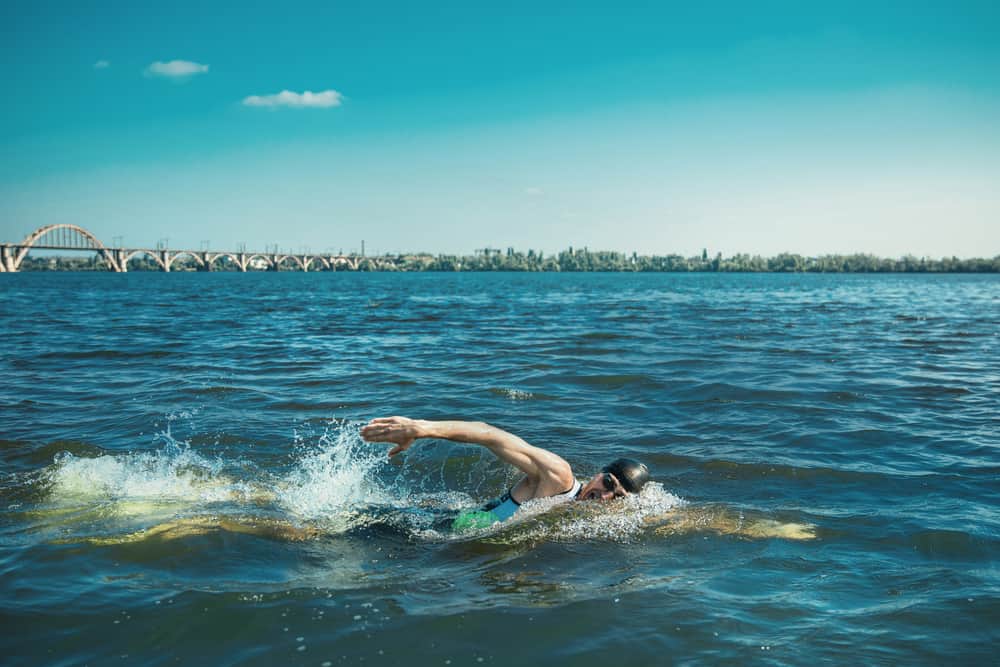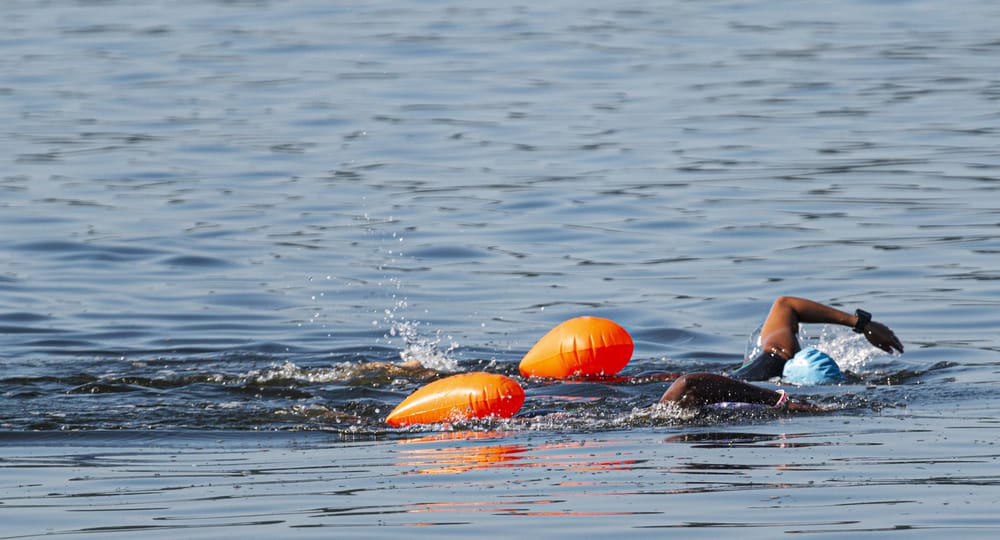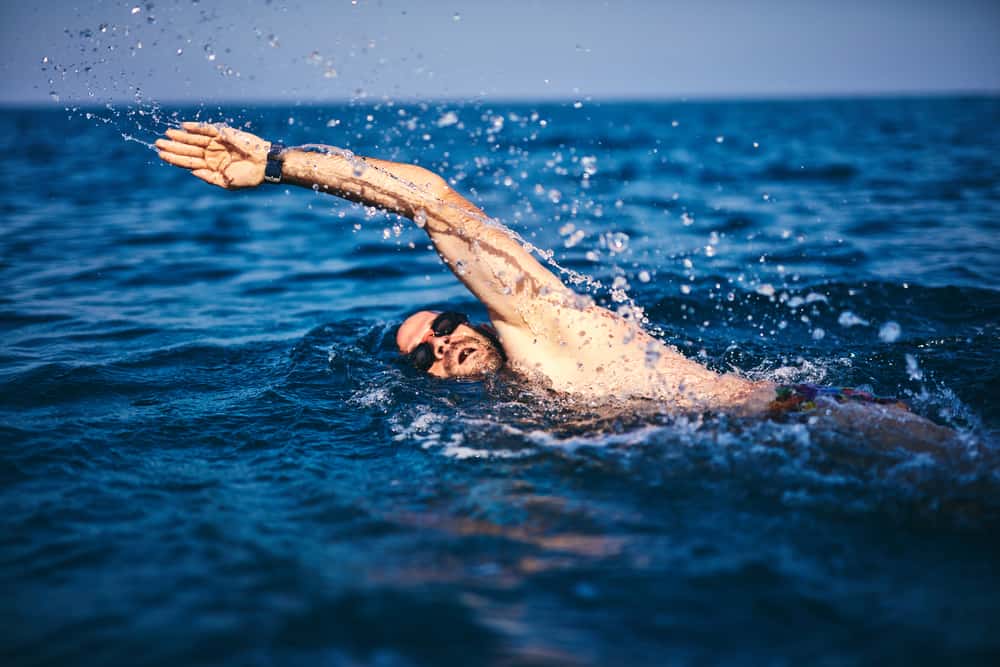Yes, open-water swimming can be safe, but there are some risks that you should be aware of before you hit the water. One of the biggest dangers of swimming in open water is getting lost. It’s easy to lose track of where you are in a significant body of water, and finding your way back to shore can be challenging if you’re unfamiliar with the area.
Another danger to consider is the possibility of getting attacked by a shark or other fish. While shark attacks are rare, they do happen occasionally. And while most fish aren’t dangerous, there are always exceptions. So it’s essential to be aware of what kinds of fish live in the area where you plan to swim and avoid swimming near them if possible.

Another hazard associated with open-water swimming is hypothermia. This happens when your body temperature gets too low and can lead to nausea, dizziness, and even unconsciousness. To avoid hypothermia, dress appropriately for the weather conditions and drink plenty of fluids before and during your swim.
Overall, open-water swimming can be a fun and safe exercise, but it’s essential to consider the risks before hitting the water. Make sure you’re familiar with the area, dress appropriately, and always swim with a buddy to ensure your safety.
Table of Contents
How to Stay Safe While Open Water Swimming
Open-water swimming can be a great way to cool off and get some exercise, but staying safe is essential.

Here are a few tips
- Always be aware of your surroundings. Make sure you know what kind of conditions you’re swimming in, and be mindful of any potential hazards.
- Wear a life jacket. This is especially important if you need to be a stronger swimmer.
- Swim with a partner. This will help keep you safe if something goes wrong.
- You should stay out of the water if there is a chance of encountering dangerous creatures or high currents.
What to Do If You Get Lost While Swimming in Open Water
It can be easy to get lost while swimming in open water, especially if you are unfamiliar with the area. If you find yourself lost, try to stay calm and conserve energy. Look for landmarks or other swimmers to help guide you back to shore. If you cannot find your way around, try to signal for help and stay afloat until help arrives.

It is also essential to consider your safety before heading out into open water. Make sure you have a buddy, and let someone know where you will be swimming. It is also recommended to wear a brightly colored swim cap to make yourself more visible in the water.
Before jumping into open water, it is crucial to understand your abilities as a swimmer and never exceed your limits. Always remember to stay safe while enjoying the thrill of open-water swimming.
Tips for Beginner Open Water Swimmers
Open water swimming can be a fun and exhilarating experience, but it can also be dangerous if unprepared.

Here are some tips for beginner open-water swimmers to stay safe while swimming
- Familiarize yourself with the area in which you will be swimming. Make sure you know where the deep places are and where the shallow areas are. Avoid swimming in areas that are known for strong currents.
- Try to swim with a partner whenever possible. This will help keep you safe and make it easier to find each other if you get separated.
- Be aware of your surroundings and look for hazards like boats or other swimmers. If you see any danger, get out of the water immediately.
- Stay calm and conserve energy if you become lost while swimming. Do not panic and try to swim back to shore. Instead, orient yourself and try to find your way back to shore.
The Benefits of Open Water Swimming
Swimming in open water offers several health and fitness benefits not found in swimming in a traditional pool. Open-water swimming is excellent for improving cardiovascular health, building muscle strength and tone, and losing weight.

It is also a great way to improve mental health by providing freedom and relaxation. Swimmers can find several beautiful locations around the world to swim in open water, and they can choose from various strokes to keep their workouts interesting.
While certain risks are associated with open-water swimming, like encountering wildlife or getting caught in a strong current, these risks can be minimized by taking proper safety precautions. This includes wearing a brightly colored swim cap, using floatation devices, swimming with a buddy, and informing someone on shore about your planned route and expected time of return.
It is also essential to familiarize yourself thoroughly with the water you will be swimming in, including checking for any hazardous conditions, such as sharp objects or contaminated water. Taking these necessary precautions can ensure that open-water swimming remains a safe and enjoyable activity. And remember – always listen to your body and never swim beyond your abilities.
What to Do If You See a Shark While Swimming in Open Water
The best way to deal with a shark is to stay calm and assess the situation. If the shark is close, try to scare it away by making loud noises or splashing it with water. If the shark is far away, try to swim away as quickly as possible. Do not panic and try not to fight the shark- this will increase your chances of being injured or killed.
It is important to remember that shark attacks are sporadic, and the likelihood of encountering a shark while swimming in open water is low. However, knowing what steps to take is essential if you happen to see one.
In addition to staying calm and attempting to scare off the shark if it is nearby, it can also be helpful to swim towards shore or other swimmers/boats if possible. Stay out of areas with known high concentrations of sharks or where fishermen might throw chum or bait into the water.
It’s also important to note that certain behaviors, such as wearing shiny jewelry or overly-bright clothing, can attract sharks. And remember basic safety precautions like not swimming alone and avoiding swimming during dusk or nighttime, when sharks are more active.


